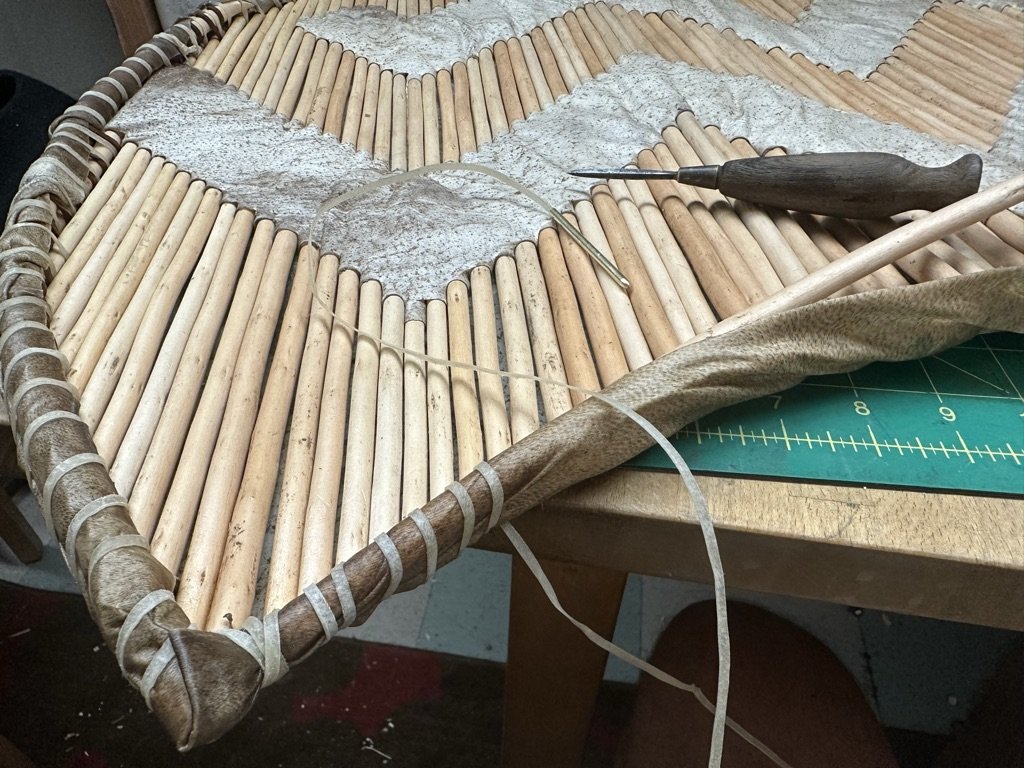Pelte Shield
I read a great article awhile back by Sean Manion about the Pazyryk Shield – a small shield made of sticks thrust through slits in a leather (rawhide?) panel fround in Central Asia, dated to the 3rd or 4th century BCE and closely resembling Greek artistic representations of various “wicker” shields up to and including Achaemenid infantry spara. Full-sized shields dated a few centuries later but made with a similar technique (and supposed by some to be Persian) have been found at Dura Europos.
I’ve used this construction technique to create a pelte shield, which are often artistically depicted with a zig-zag pattern similar to these other shields (which is a very practical design given the need to offset the slits in the leather). It’s constructed with a frame of willow rods woven through goatskin rawhide, secured with tanned leather thongs to a rim of steam-bent willow that’s then wrapped and bound with rawhide. Such simple, rustic materials would have been inexpensive and readily available to the poor shepherds who would've supplied peltast light infantry to the Greek city states, and they make a fascinating technological contrast with the highly refined bronzework seen on hoplite panoplies. (One of the things that supposedly marked barbarians as primitive to the Greeks was their use of thongs to sew rather than thread.)
I futzed around with the placement of the rawhide porpax to find the best attachment point for defense/parrying without obstructing extended-arm javelin throws. The crescent shape seems optimized when held out lengthwise (as we often see with aspides), covering the bearer’s body while allowing the free throw of javelins through the cutout. The shield weighs 1200gm (2lbs, 10oz). No aspis, to be sure, but better than nothing, and I think it would’ve provided decent protection against the rocks and other missile weapons a peltast would’ve primarily faced.
The Pazyryk Shield
